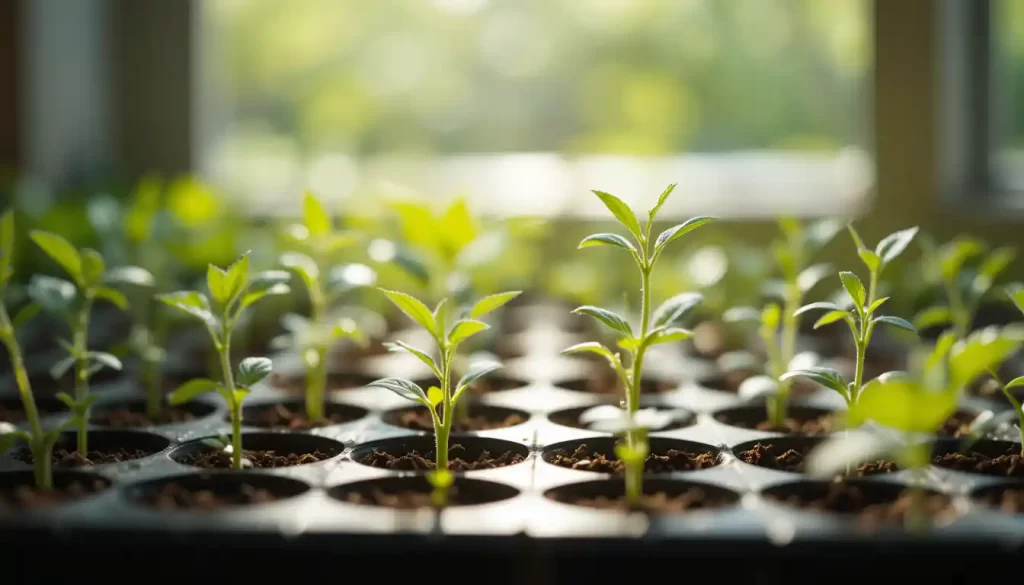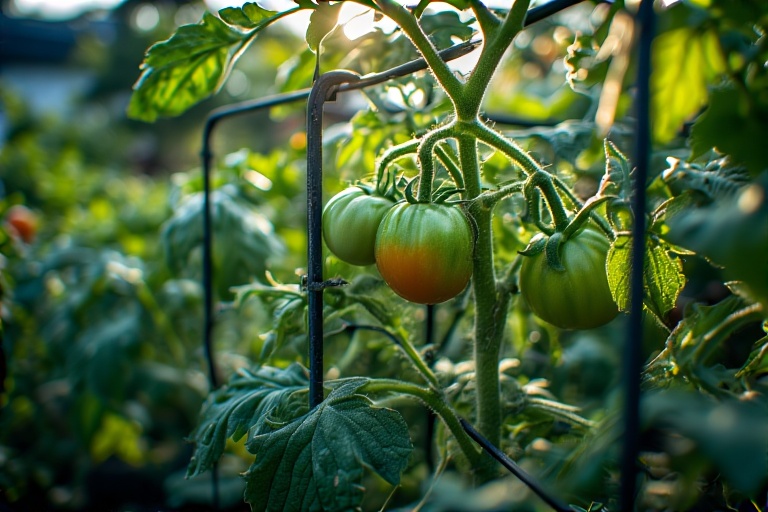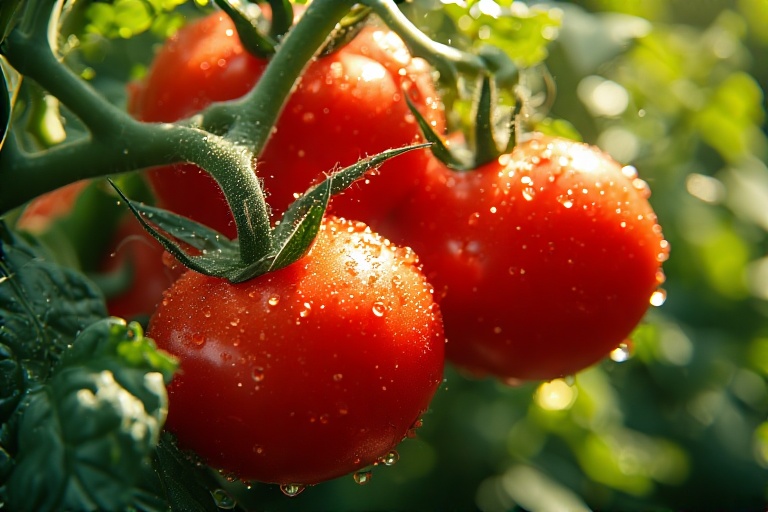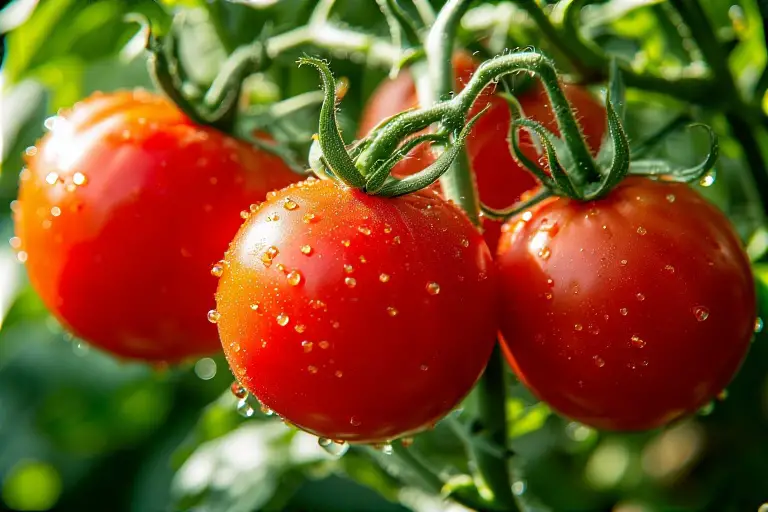We use affiliate links to run our site. When you buy through links on our site, we may earn an affiliate commission, without any added cost to you. Learn more
Want to grow amazing tomatoes and become a gardening pro? You’re in good company – nearly 9 out of 10 gardeners love growing tomatoes! But, let’s be real, growing tomatoes for the first time can be a bit intimidating.
Don’t worry, we’ve got your back! We’re here to help you navigate the 9 most common challenges that beginners face, so you can have a successful first season. And, let’s be honest, there’s nothing quite like the feeling of biting into a juicy, ripe tomato that you grew yourself.
So, what are you waiting for? Take the first step today and start growing the tomatoes of your dreams!
1. Timing and Planting Mistakes

When you’re growing tomatoes for the first time, timing is crucial. If you plant them too early, you risk killing them off with frost or cold temperatures. The magic number is when nighttime temperatures are above 50 degrees and daytime temperatures are 60 degrees or higher – that’s when you know it’s safe to move them outside.
If you wait too long to plant, you’ll be out of luck when the weather starts to cool down. Tomatoes need warm weather to grow and produce fruit, so for optimal growth, make sure the soil is at least 60 degrees Fahrenheit during the day.
One more thing to keep in mind: when you’re moving your seedlings from indoors to outdoors, do it slowly. This is called hardening off, and it’s super important for keeping your plants healthy and strong. Don’t shock them with a sudden change in environment, or you’ll be sorry.
2. Soil and Nutrient Management Challenges
Now, let’s talk about the dirt – or rather, the soil. Although tomatoes are pretty flexible about the type of soil, they love that it’s deep, rich, and drains well. Tomatoes also need organic matter and a slightly acidic pH (around 6.5) to thrive.
If your soil’s pH is way off (too high or too low), your plants won’t be able to absorb the nutrients they need. And trust me, nutrient deficiencies can be a real problem for beginners. Here are some common symptoms to look out for:
- Nitrogen deficiency: oldest leaves turn yellow, followed by younger leaves turning greenish yellow.
- Phosphorus deficiency: young plant leaves turn purplish.
- Potassium deficiency: new leaf margins turn yellow, and fruit might not ripen properly.
To create the perfect soil mix, try this simple formula: 30% compost (for nutrients and organic matter) + 70% base soil (for structure and minerals). Easy peasy!
No products found.
3. Watering Complications and Environmental Stress

Watering your tomatoes can be a real challenge, especially if you’re new to growing. The key here is to keep the soil consistently moist, without overdoing it. Too much water can cause those pesky splits that leave scars on your tomatoes.
Here’s a rough guide to follow:
Your tomatoes need about 1-2 inches of water per week. But that’s not a one-size-fits-all deal – the amount of water they need changes throughout the season. For example:
* During the peak growing period (weeks 4-6), they need about 2 inches of water per week.
* Later in the season, they might need as little as 0.5 inches per week.
And then there are the environmental stressors to consider. If it’s too cool (below 50°F at night), your tomatoes might develop weird shapes or not produce as much fruit. Specifically:
* Temperatures above the mid-60s (°F) help your tomatoes grow nice and round.
* Lower temperatures can cause ridges on the fruit (like a bumpy shoulder) and ugly bottoms.
* Big temperature swings can even cause your fruit to develop weird deformities and reduce your yields.
4. Pest and Disease Management Concerns
Growing tomatoes can be a blast, but there are some sneaky pests and diseases that can ruin your crop. As a beginner, it’s easy to get caught off guard by these common culprits:
- Young transplants are vulnerable to aphids, flea beetles, and leafminers.
- In the field, you’ll want to keep an eye out for flea beetles, aphids, leafminers, stink bugs, and tomato fruitworms. They might not seem like a big deal at first, but they can cause serious damage to your fruit.
Fungal diseases like early blight and Septoria leaf spot can also wreak havoc on your plants. Here’s what to look out for:
- Early blight: yellow leaves with black centers at the bottom of the plant.
- Septoria leaf spot: lots of small brown spots.
These diseases love to pop up after heavy rains and humid conditions, so make sure you’re giving your plants plenty of space to breathe.
And then there are the tomato hornworms – the ultimate tomato nemesis. These bright green, striped caterpillars can grow up to three inches long and strip your plant bare in no time. Don’t let them catch you off guard – keep an eye out for these guys and squash them early to save your crop!
Also read: 9 Deadly Tomato Pests That Can Ruin Your Tomato Yield
5. Structural Support and Pruning Mistakes

To get the best from your crop, provide the support it needs. Pruning is essential—don’t worry, it’s not as daunting as it seems!
Leaving suckers (shoots at the base of the main stem and side branches) can reduce your fruit production. Pruning them redirects energy toward fruit growth and prevents excessive foliage.
Additionally, stake or cage your plants to ensure they have enough space. This prevents overcrowding, reduces pests and diseases, keeps fruit off the ground, and improves air circulation.
Pruning and staking are like workouts for your tomato plant—they help it stay strong and healthy, leading to a bigger, better crop!
No products found.
6. Variety Selection and Space Management
Before growing tomatoes, choose the right variety for your needs. Avoid varieties that are difficult to manage or unsuitable for your area. Consider the following:
- Determinate tomatoes: These grow to a set height and are ideal for small spaces and beginners.
- Indeterminate tomatoes: These continue to grow and produce throughout the season, great for larger harvests.
Also Read: Determinate vs Indeterminate Tomatoes: Understanding the Key Differences
Also, think about spacing. Planting tomatoes too closely can cause:
- Reduced air circulation: This increases the risk of disease.
- Excess shade: Crowded plants can block sunlight, affecting fruit production.
Ensure your tomatoes have enough space to thrive. Proper spacing is essential for a healthy, productive crop!
7. Fertilization and Feeding Errors
Tomatoes need a steady supply of nutrients to keep producing fruit, so you’ll want to fertilize them regularly throughout the growing season. Here’s a rough plan to follow:
- Before you plant, give your soil a boost with some initial amendments.
- Every 3-4 weeks, give your tomatoes a dose of fertilizer to keep them happy and producing.
But be careful not to overdo it – too much fertilizer can be just as bad as too little. If you give your tomatoes too much nitrogen, they’ll grow a ton of leaves but not produce much fruit. And that’s not what you want!
The goal is to find a balance, so aim for a fertilizer ratio that’s around 10-10-10 (nitrogen-phosphorus-potassium). This will give your tomatoes the nutrients they need to thrive.
8. Harvest Timing and Post-Harvest Handling

So you’re waiting for your tomatoes to ripen, but they’re not looking quite right yet. Don’t worry, it’s normal for the first few fruits on heirloom varieties to be a bit wonky, especially if it’s still a bit chilly at night. Just remember, they’re still edible and will taste great once they’re ripe.
When it comes to harvesting tomatoes, timing is everything. You want to pick them when they’re just starting to show some color change, because they’ll continue to ripen off the vine. Plus, if you leave them on the plant to fully ripen in the hot sun, they can get a bit mealy and lose their flavor.
By picking them a bit early, you’ll end up with better-tasting tomatoes that have a great texture too.
9. Prevention Strategies and Best Practices
Want to grow great tomatoes without dealing with pests and diseases? The key is prevention! Here are some tips:
- Choose disease-resistant varieties.
- Rotate your crops to maintain soil health and prevent pests.
- Provide ample sunlight, water, and nutrients.
Consider companion planting, which involves growing different plants together to create a balanced ecosystem. Some plants repel pests, while others improve soil or attract beneficial insects. This approach fosters a resilient, growing system.
Be proactive in caring for your plants from the start, and you’ll enjoy a bountiful harvest!
Also Read: The 25 Best Companion Plant Pairings For Your Tomatoes
Conclusion
Growing tomatoes can be a bit overwhelming, especially if you’re new to it. But don’t worry, with a little knowledge and some basic care, you can overcome common challenges and enjoy a successful harvest.
Here’s the thing: it all starts with a solid foundation. Get your soil ready, choose healthy plants, and give them the care they need throughout the growing season. And when problems arise (and they probably will), be proactive and address them early on.
The good news is that tomato growing is a skill that gets better with time and practice. Each season is a chance to learn and improve, and with a little patience and persistence, you’ll be growing like a pro in no time. So don’t get discouraged if things don’t go perfectly at first – just keep at it, and you’ll be enjoying a bounty of fresh tomatoes in no time!
Amazon and the Amazon logo are trademarks of Amazon.com, Inc, or its affiliates.

Hi there! My name is Prasenjit and I’m an avid gardener and someone who has grown a passion for growing plants. From my hands-on experience, I have learned what works and what doesn’t. Here I share everything I have learned.

